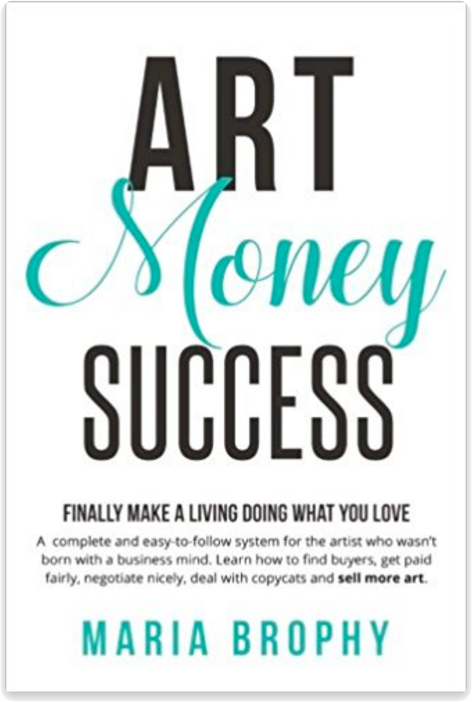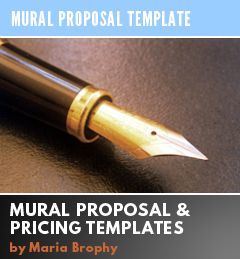An artist sent me this question by email:
“After looking over your art prices, I’m curious; how are you able to charge such high rates to strangers?”
The writer was referring to the prices we charge for Drew’s artwork. In many cases, our prices are much higher than the prices of other artists in our field.
But it wasn’t always that way.
In fact, just in the past two years we made a major change in the way we do business, which allowed us to increase our prices (and income) by over 40%!
Essentially, the changes we implemented were as follows:
1 – We made the decision to target High Value clients and collectors
2 – We increased our level of service to match the needs of High Value clients
3 – We increased our prices to enable us to increase our level of service
You’ll note that with #1, above, I used the word “decision” – it wasn’t luck that brought us better clients and higher pricing, it was a DECISION that we made to up-level our services and our clientele.
And if you want to, you can make this decision, too.
In this post, I want to address two points on charging higher prices. The first is WHY we charge more than others and the second is HOW we get “strangers” to pay it.
WHY WE CHARGE HIGHER PRICES
I tried to answer the question that spurred this post in under 500 words. I really did! But, for a reader to understand HOW to charge higher prices, it’s important to first explain WHY you should charge more. So I added another 600 words to give you a full explanation!
Why do we charge higher prices? There’s a GREAT reason, and when you read this, it will make so much sense! The reason has nothing to do with “I want to make more money” or “because we’ve earned it” or “because we are damn good at what we do.”
In a nutshell, we charge more because Drew and I decided to create a business model that targets High Value clients and collectors.
When you work with High Value clients, you HAVE to charge more. I’ll explain why in a minute.
But first, what is a High Value client? For us, it’s someone that we enjoy working with, who needs and appreciates our expertise and who has the budget to pay our prices.
The opposite of a High Value client is a Low Value Client – we’ve all had our fair share of those!
A Low Value Client:
- Grinds you on price (you’ve had those, right?!)
- Changes their mind a lot and makes a lot of changes
- Expects a lot of extra work for free (they don’t value your time)
- Doesn’t pay on time
- Leaves a real sour taste in your mouth!
By the end of a project with a Low Value client, you feel exhausted, angry and used! (Right? Tell me this has happened to you at least once!)
On the other hand, A High Value Client:
- Knows what they want
- Trusts your expertise
- Can afford your prices
- Values your time, will gladly pay for extra services, and pays on time
High Value clients can be individual people or companies in all different shapes and sizes, but there’s one thing that they all have in common:
High Value clients expect quality service and high value art.
And that is why you have to charge more. You have to give High Value clients so much more, because they expect it.
(And one more thing: many of our High Value clients are big companies; and big companies have a lot of red tape that takes more of your time. When working with big companies, you have to charge more because they suck up a lot more of your time than a small company.)
To keep High Value clients happy, you must:
- Use the finest materials that are of excellent quality
- Give them extra special attention and take care of all details
- Make the process of working with you easy-as-pie!
These things cost you time and money. Ergo, you have to charge more if you are going to work with High Value clients.
When a High Value client commissions art from Drew, they get the following royal treatment:
- We regularly update them on the progress with photos during the entire process
- We use the finest materials
- We make it extremely E-Z for them to work with us
- If there’s a problem, the client never hears about it. Their experience with us is completely worry-free.
- We do all the thinking for them, and their project appears to magically come together with little effort on their part.
Artists who don’t charge enough have to cut corners.
If you don’t charge enough, you don’t have the time to hold your clients’ hands through the process. You can’t afford the finest paints. And when you cut corners and skimp on quality, the end result is not of the highest value.
And I should know, I used to be in the “not charging enough” camp, not too long ago!
When Drew and I didn’t charge enough, it would be a big setback if a client asked Drew for changes too late in the process. We would lose time and money and become incredibly stressed (and cranky).
When we charge appropriately for our projects, we can afford the best supplies and unexpected setbacks. All of these things are built into the price. And best of all is that we are able to give our clients a great experience, worry free.
HOW TO CHARGE HIGHER PRICES TO STRANGERS:
The question that inspired me to write this post was “how do you charge higher prices to strangers?”
There’s a few things you need to do to be able to win over clients who have never met you before:
1 – Have a strong body of work and show it on your website: When you display consistent, good work that you’ve been doing for years, it gains a stranger’s trust. When they see that there are many other clients you’ve done great work for, it gives them confidence in you. (We post “Case Studies” on Drew’s website to show the work done for other clients in the past.)
2 – Connect with the client via good communication: Get your new client on the phone (yes, actually talk to them!). Connect with them deeply, come to understand their needs, and win them over by telling them how you can fill their needs with your expertise.
3 – Make it clear (on website and communications) that you provide only the best possible services: Describe how you use only the finest materials and how you give extra special attention to every project.
4 – Build Trust: The only thing a good client wants to know is this: Can they rely on you to do what they need? Your job is to convince them that you can (and then do it)!
Rather than sending impersonal emails back and forth, Drew and I speak to every client that shows an interest, and that’s the first step in building their trust.
We take the time to understand what they need, and then describe how we can do it for them. We help them gain confidence in our abilities.
I have found that the more trust a client has in your abilities, the more money they are willing to pay.
Of course, this advice is for the artist who is experienced and good at what they do. If you’re just starting out, you’ll have to build up your experience first. You’ll have to be patient and put in the time before you can command the higher prices.
A good example of an artist who is highly paid is Chase Jarvis. He’s one of the best paid photographers in the U.S. He earns about 100X what most photographers are paid!
He has made it his focus to work with High Value clients who expect excellent work and will pay top dollar for it.
You can learn how Chase Jarvis is able to charge 100X more than most, in this blog post. Be sure to watch the video in the post – it is worth your time if you want to become a highly paid artist. The video is full of incredible insights on this topic!
In the comments below, please share your thoughts on these ideas. I’d love to hear what you think!
Please share your own personal stories in the comments!
Maria















